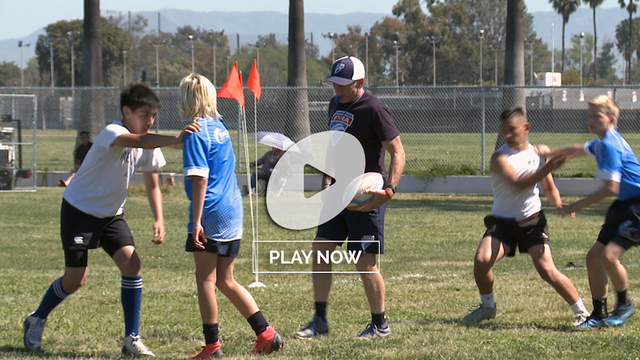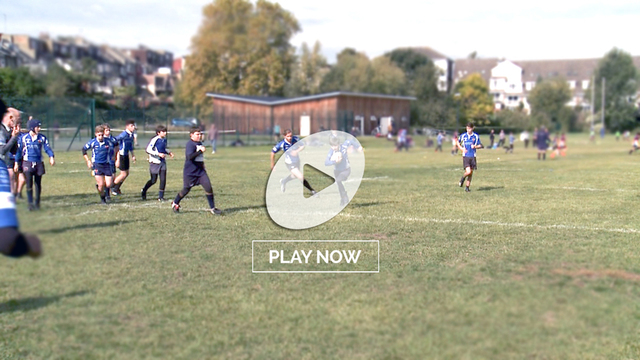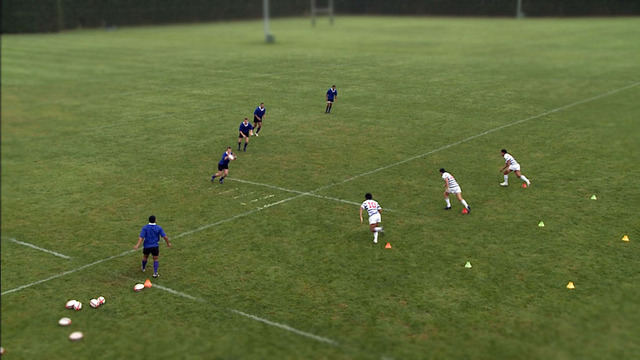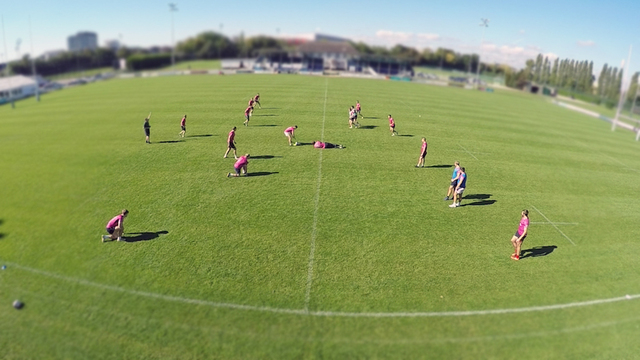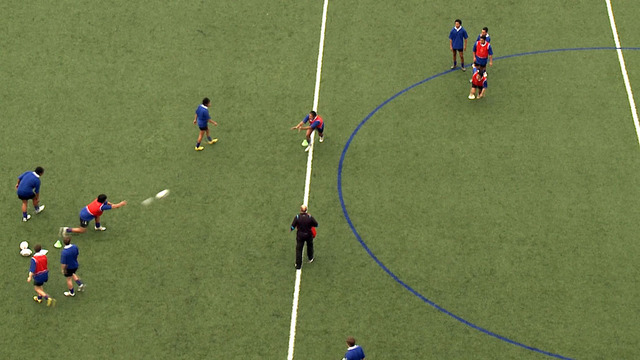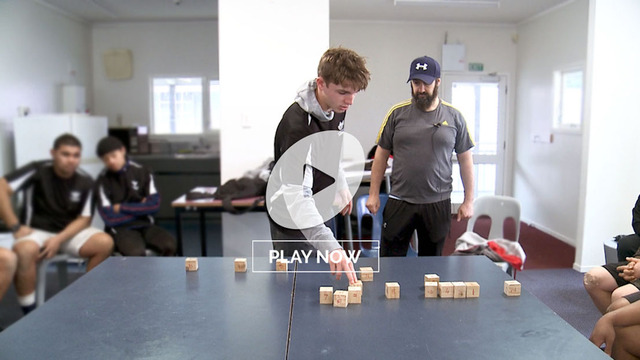‘Bending the line’ with the blind-side wing & two lines of attack
In his last article for The Rugby Site, Dave Ellis focused on the idea of ‘bending the line’ by means of a ‘front door, back door option’ and especially via the use of the blind-side winger, who is more often than not the key extra attacker in the modern game.
Dave’s introductory comments are worth repeating:
“Teams that really rush up hard on defence cannot afford a slight disconnect in their line integrity and creative attacking sides are looking at doing just that by having ‘front door’ and ‘back door’ options but more importantly very active blindside wingers. Running lines and timing are key to success in these plays, all players must be a genuine threat and players from depth look more effective when hitting onto the ball late. Second touch rugby allows the attack to get greater numbers around the ball which help create these options.”
He uses further examples from games of the Northampton Saints to demonstrate his meaning. The Saints are coached by ex-Hurricanes’ boss Chris Boyd, with one of the liveliest young intellects in the English game (ex-Leicester full-back Sam Vesty) handling the attack structures.
During the recent group stages of the European Champions Cup, Leinster found that Northampton’s attack patterns from set-piece were the most difficult to neutralize.
The main reason for the problems arising was the presence of one of the biggest and most powerful ball-carriers in the world game on Northampton’s left wing – the Australian ‘Tank’, 6’5 inches and 130 kilos of Taqele Naiyaravoro.
I say ‘left wing’, but in the Saints attacking system, the problems are effectively doubled by their tendency to shift the Tank to the blind-side wing on both sides of the field, right and left. They are then multiplied the Saints’ ability to run circle balls or wrap-around plays in midfield, the equivalent of ‘second touches’ for the defence, or an extra man for the attack.
The front door/back door options, and the use of the blind-side wing, are most clearly illustrated from set-piece attack. One of the earliest examples occurred at a 6th minute lineout from the first match in a ‘double-header’ between the two teams:
The lineout occurs on the left side of the field, with Naiyaravoro as the blind-side wing:
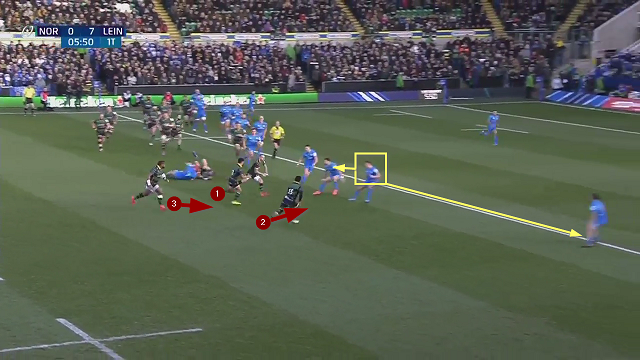
At first glance the Leinster defence looks to be in good shape. It has managed to push out its number 7 Josh van der Flier (in the red hat on the ground) onto Saints’ number 10 Dan Biggar and take him out of the game. Get your defending 7 on to the attacking 10, and you will normally enjoy extra insurance against attacks wide out. Your own number 10 is still in play defensively and can move on to next receiver.
A deeper examination reveals persistent problems for the defence. There are still two potential flat receivers – “1” (centre Matt Proctor) and “2” (full-back Ahsee Toala) – with Naiyaravoro lurking at “3” on a wider arc behind them. The distributor (number 12 Rory Hutchinson) is passing off square, and this creates an issue for the key Leinster defender – number 13 Garry Ringrose in the highlighted box.
Ringrose has been forced to stop and look in towards Hutchinson, and he now has to make a decision about how best to defend the space out to his wing James Lowe. If Northampton time the move perfectly, that means a two-on-one for the Leinster outside centre, because he has to account for both Toala and Naiyaravoro.
In the event, he stays tight and that allows Hutchinson to pass flat across the defence and put Toala into a hole. To quote Dave Ellis, “at one stage any lateral runner was mainly used to get the ball to a more direct runner. However now we are seeing a lateral runner often pass to another on a similar line”.
There is a ricochet effect on the following phase too. After the Toala tackle-bust, Ringrose has only just gets himself back into line in time to be targeted by the next wave ball-carrier, number 8 Teimana Harrison. He has only been able to regroup straight back within range of the previous ruck into another ‘danger zone’. Northampton scored wide out on their left on the very next play.
A few minutes later, Saints engineered another break from 1st phase lineout:
There is a neat circle ball between first receiver Hutchinson and Biggar, and suddenly a very familiar defensive issue has been created for Garry Ringrose:
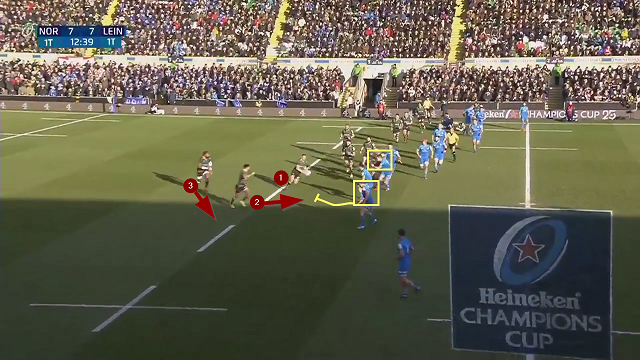
Hutchinson has used the momentum from his flat positioning to propel himself into Johnny Sexton and take him out of play, which leaves Ringrose facing the same choice between staying tight for the flat runner (“2” Proctor) or shifting out to cover Naiyaravoro’s wide arc from the second line of attack (“3”). This time he picks ‘the Tank’ and that allows Proctor to take the gap inside him.
As Dave Ellis points out, ‘bending the line’ and the concept of two lines of attack has grown from being a simple back door option, to a decision-tree with multiple variations. It puts the question to a key defender and asks him to find the right answer. If the passer and his receiving options can keep their discipline and focus, the odds probably fall out in their favour.
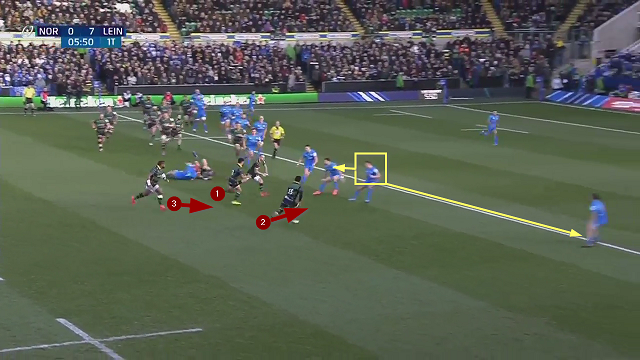


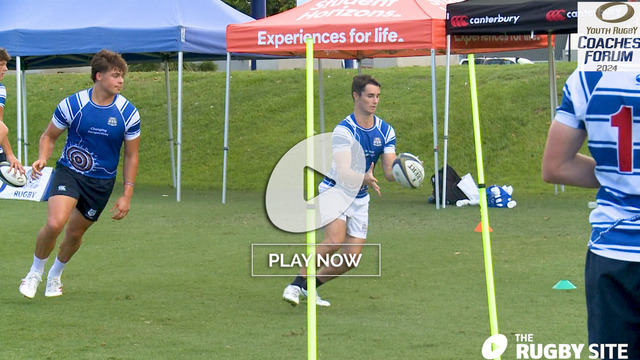
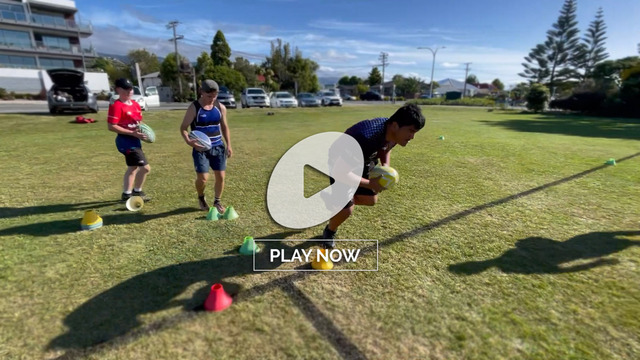
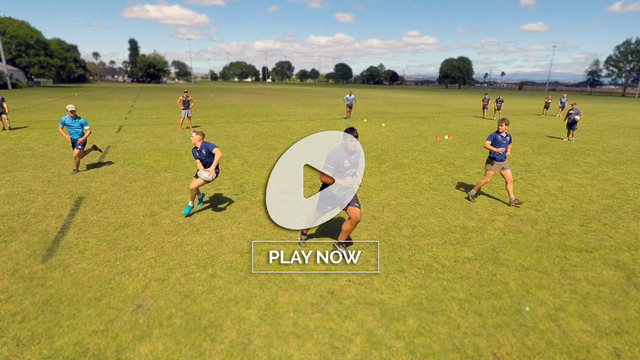
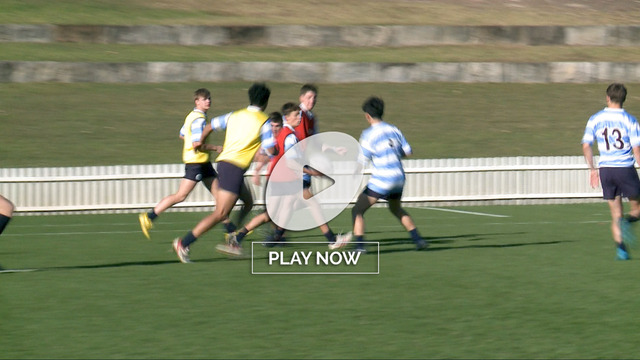

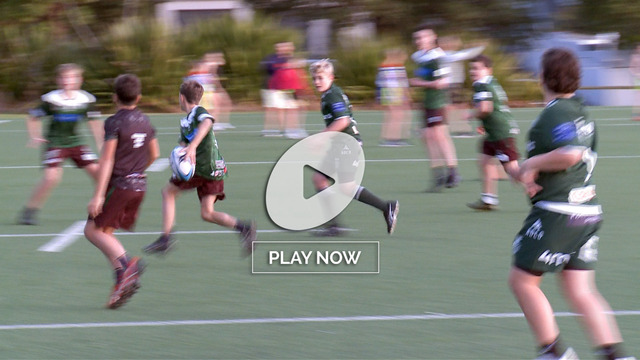
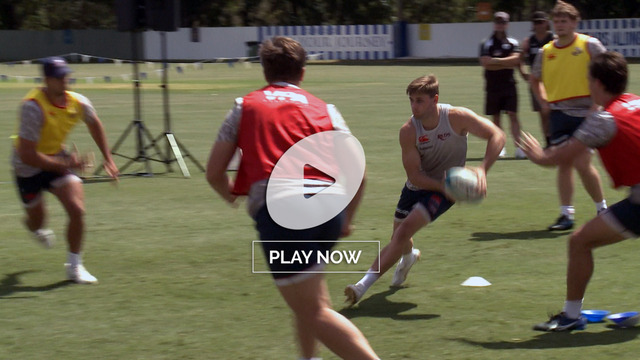
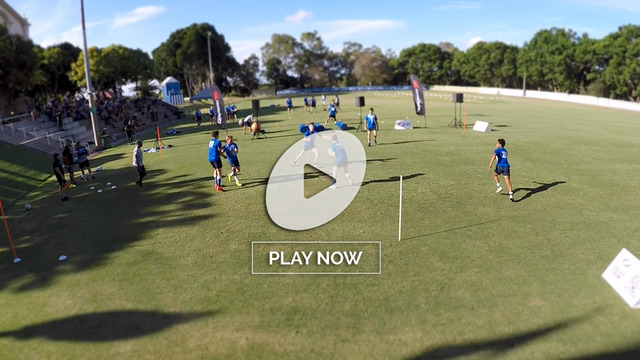
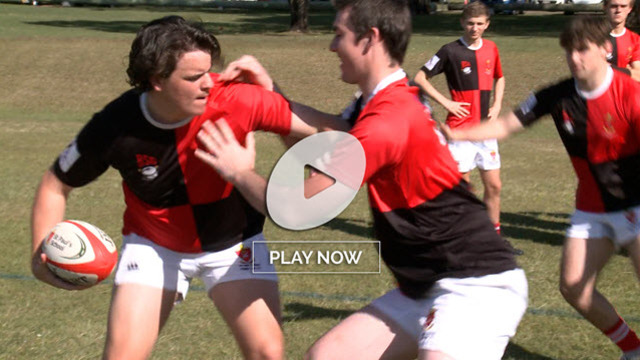
.jpg)
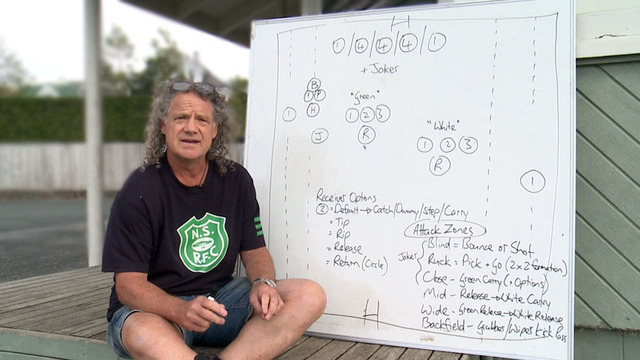
.jpg)
